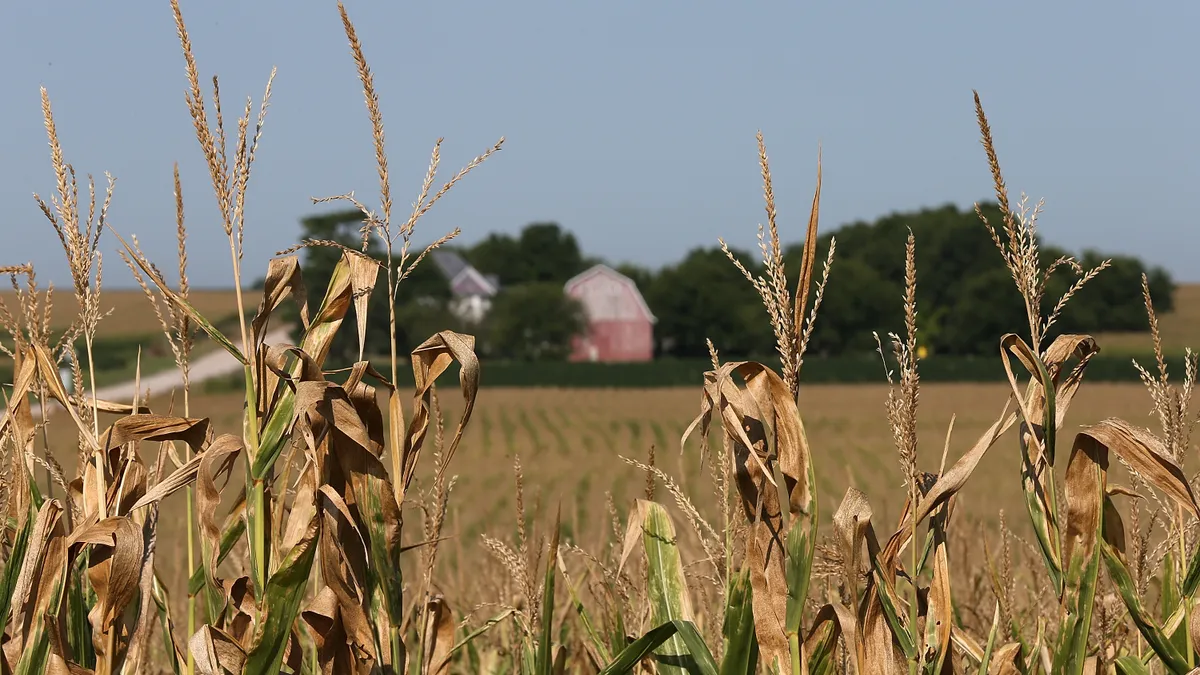Dive Brief:
- Rapidly intensifying drought across the Midwest is threatening to undermine what was expected to be a banner harvest for corn and other commodities.
- Close to 60% of the Midwest is under moderate to extreme drought conditions as of June 23, according to the National Integrated Drought Information System, compared to just 8% five weeks ago.
- If the Corn Belt doesn't receive water soon, "there will likely be impacts to corn yields, and potentially other crops as well," the NIDIS said.
Dive Insight:
Dry conditions could equal — or even surpass – those experienced in 2012 and 2013, which was considered the most severe drought in half a century and caused an estimated $30 billion in mostly agricultural losses.
The percent of topsoil in Illinois rated as "short to very short" of moisture currently surpasses levels during the same period in the 2012 drought, the NIDIS said. Illinois is the nation's top soybean producer and the second-largest producer of corn.
Farmers had expected plentiful harvests this year, and expanded planting acreages of corn and soybeans in the spring. Although drought has recently pushed up prices of corn and soybeans, farmers will actually need to grow the crops to capitalize on the market.
"We're going on six weeks of no rain with our crop in the ground," Megan Dwyer, a farmer in Northwest Illinois, said at the Wall Street Journal Global Food Forum in Chicago last week. "We're at a really critical point, especially for our corn."
Beyond production, drought could also lead to shipping disruptions on the Mississippi River. Low water levels last year prompted shipping restrictions that slowed exports, pushed up prices and forced some producers to find alternate means of transportation.
River stages throughout the entire Mississippi River Basin are well below average, and dry conditions are already "causing issued and increased concerns for shipping" in the Gulf of Mexico, the NIDIS said. The area just downstream of the confluence of the Ohio and Mississippi rivers could reach low water stages as early as the next one to two weeks.
It's unclear whether the weather will improve throughout the summer. The U.S. seasonal drought outlook for June 15 to Sept. 30 indicates drought will persist and potentially expand across the Midwest this summer, NIDIS said











